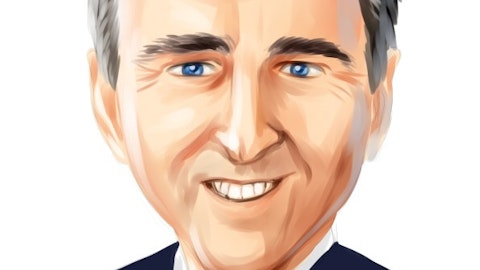So I also note that as BCDA-02 enrollment accelerates, we can handle the manufacturing here at our facility. We’re currently only one and running one shift in both of our capabilities and we have rooms, for example, on the cell manufacturing. We can add incubators as we can do things to expand out our capabilities.
Joe Pantginis: Got it. No, very helpful. And then my last question with regard to the 01 study in heart failure, obviously right now, based on your comments and what we’ve obviously been discussing for a while, lot of moving parts. So, lot depends on what’s coming up from your upcoming discussions with the FDA. So I guess I’d ask right now what we could know or would already be in place, the upcoming interim analysis it is going to be essentially look at everything futility, safety, efficacy, is there, or what is the alpha spend around that or how would it impact the current statistical analysis plan — analysis plan ahead of any changes from an adaptive design?
Peter Altman: Yeah, that’s a — it’s a great question and that’s the — one of the great challenges of these adaptive statistical analysis. I think the alpha spend is going to be very low and for folks that don’t have a PhD on the call like Joe does, the alpha spend is what level of the p-value are you going to lose in order to have statistical significance. So right now, as we’re regulated as a device system for this autologous therapy, we’re expecting to only have to achieve a P-value of less than 0.05 in one large well-controlled study. Again, the agency will look at the totality of data. We won’t know what the alpha spend is until we get the adaptive statistical analysis plan reviewed and blessed by the agency. As I’ve shared, that is imminent.
We have a call scheduled with the agency for this Friday. But as I’m sure you can appreciate Joe and others, it’s typically a back and forth. We want to minimize the amount of alpha that we do spend, the amount of our power that we’re going to lose. And so I’d much rather be facing a P-value of 0.05 than one of 0.001 because we spent all the alpha, but I think they were going to wind up in a good place. There’s a lot of experienced folks that we’re working with on the design, the adaptive statistical analysis plan, and we’ve brought in some pretty high profile regulatory consultants to help the agency to appreciate this. I also note that in this trial, we now have breakthrough designation for this lead program, and breakthrough designation can enable us to collect additional safety data on the other side of presenting results that meet the primary endpoint in the trial.
And I think that’s the key thing for, when you’re going after an approval, and this is why we’ve brought in some very experienced folks, you want to make sure — our job here is not to get a success in the trial. Our job here is to get cardiac cell therapy approved and available for patients. And so we want to be very thoughtful in this process on maximizing our probability of technical success, but also near term commercial success.
Joe Pantginis: Understand. Thanks a lot for the color.
Peter Altman: No, great questions, Joe, really appreciate them.
Operator: And our next question will come from Kumaraguru Raja with Roth Capital. Please go ahead.
Kumaraguru Raja: Thanks for taking my questions. Again with regard to the left ventricular ejection fraction, do you know what was the range at baseline and also the range at the one year and two year time point?
